[The Phlox Family in the Cascade
Mts. of Oregon and Washington]
Granite Gilia, Granite Prickly-phlox, Prickly Phlox, Sharp Linanthus
Linanthus pungens
Synonyms: Gilia hallii, Gilia pungens, Gilia pungens var. hookeri, Leptodactylon hazeliae, Leptodactylon lilacinum, Leptodactylon pungens, Leptodactylon pungens ssp. brevifolium, Leptodactylon pungens ssp. eupungens, Leptocactylon pungens ssp. hallii, Leptodactylon pungens var. hallii, Leptodactylon pungens ssp. hazeliae, Leptodcactylon pungens ssp. hookeri, Leptodactylon pungens var. hookeri, Leptodactylon pungens ssp. pulchriflora, Leptodactylon pungens ssp. pulchriflorum, Leptodactylon pungens ssp. pungens, Leptodactylon pungens var. pungens, Leptodactylon pungens ssp. squarrosum
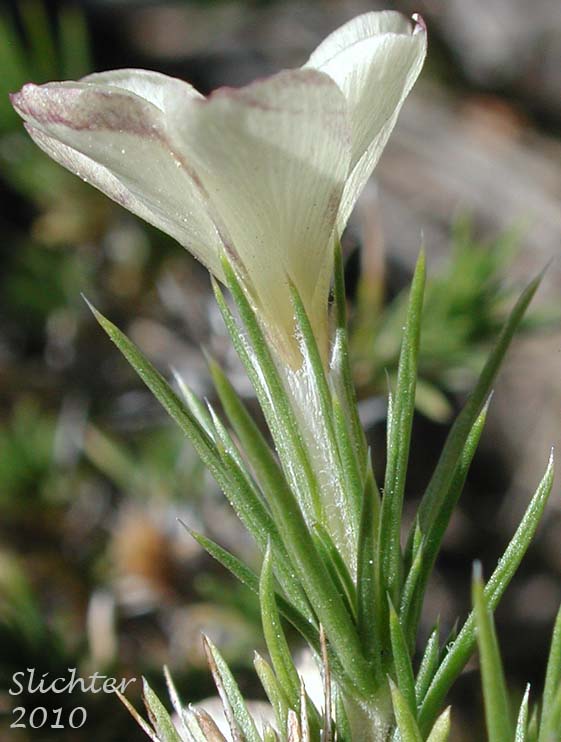
Close-up of the calyx and corolla of granite gilia as seen at Antelope Mt. Lookout, Malheur National Forest........July 18, 2010.
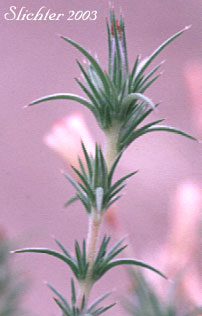 The
photo at right shows the upper stem and leaves of prickly phlox from near Borax
Lake, southeastern Oregon.............May 28, 2000.
The
photo at right shows the upper stem and leaves of prickly phlox from near Borax
Lake, southeastern Oregon.............May 28, 2000.
Characteristics:
Granite gilia is an erect wildflower, shrub-like with several
to many branches either in an open pattern or perhaps even densely packed. The
plant is sweetly aromatic. The flowers seem to close or wrinkle up during daylight
hours, and it is rare to see the whole plant in bloom, but such a find is a
marvelous sight! (and a treat to the nose too!)
The plant may attain a height of 60 cm. Leaves are numerous
and crowded on the stems. The lower leaves may be opposite, while those higher
up may be alternate. The leaves are palmatified into 3 to 7 sharp, rigid, linear
segments. The leaves are a dark green, and dead leaves may persist on the plant
through several growing seasons.
The flowers are solitary in the leaf axils. The corolla is 15
to 25 mm long. Petal color ranges from creamy white to lavender, yellowish,
or salmon. Granite Gilia is a nocturnal bloomer, so as mentioned above, it is
rare to see it in full bloom during daylight hours.
Habitat:
Granite gilia is a plant of dry, open sandy, dusty, or rocky
places. It is a plant of deserts, plains, and open forests to moderate elevations
in the dry mountains of the west.
Range:
Granite gilia is found from southern British Columbia south
along the eastern base of the Cascades to Baja California. It is found eastward
to Montana, western Nebraska and Colorado, and New Mexico.
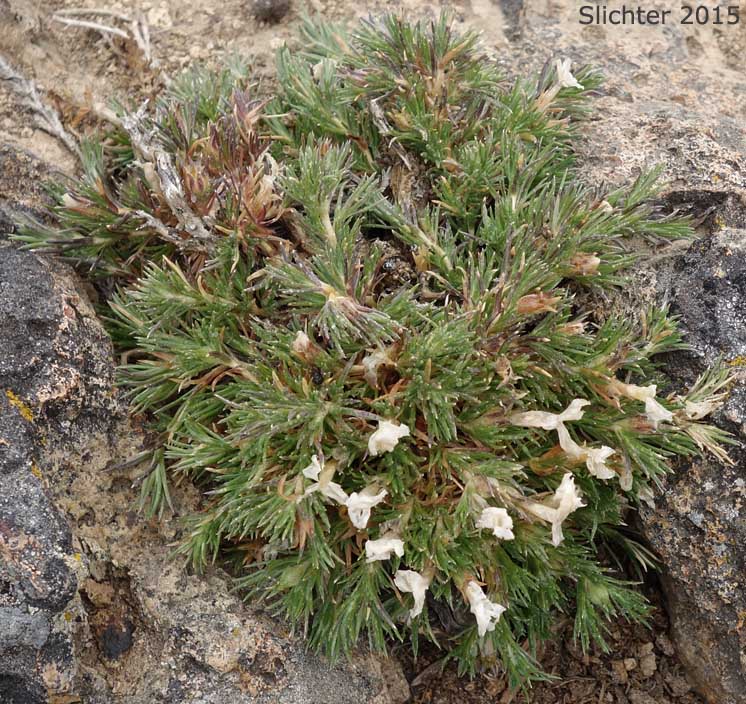
Granite gilia as seen at a bald about one-quarter mile west of the Ironstone Trail #1411 trailhead near Cash Prairie, William O. Douglas Wilderness.........July 25, 2015.

A close-up of the prickly, upper stem leaves and corolla of granite gilia as seen at Antelope Mt. Lookout, Malheur National Forest..............July 18, 2010.

Prickly phlox as seen along Forest Service Road #1647 in southeastern Logan Valley, Malheur National Forest........July
3, 2010.
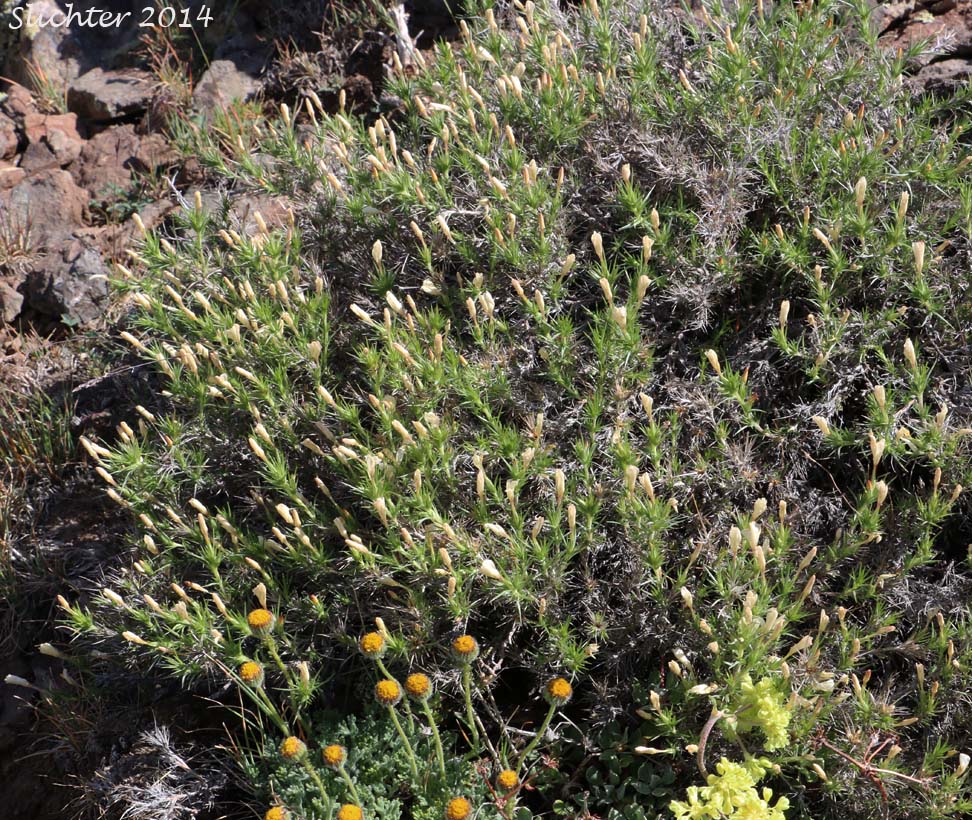 -
- 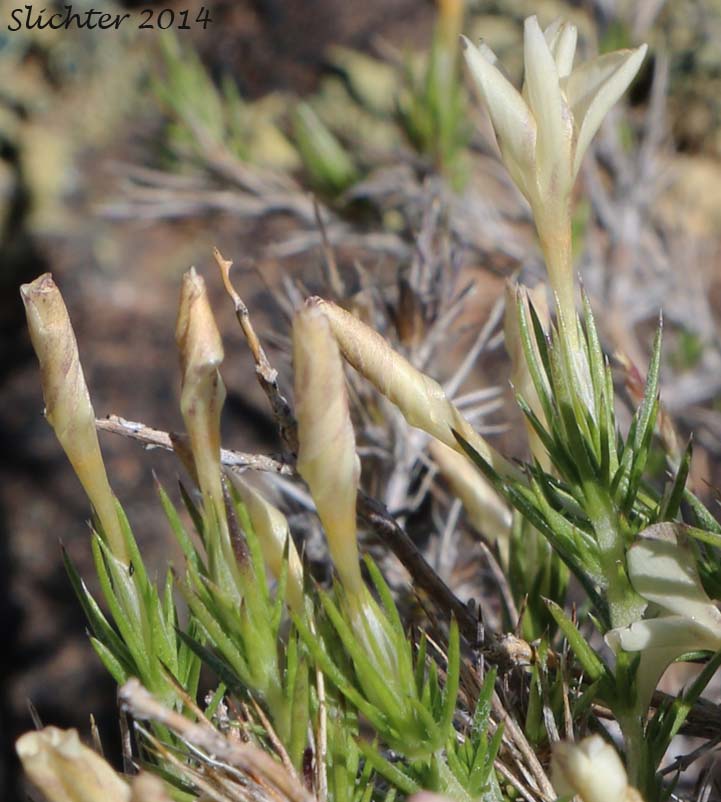
Prickly phlox as seen on rock outcrops along the South Loop Road about one and one-quarter miles downhill to the west of the East Rim Viewpoint..........July 9, 2014.
Paul Slichter
 The
photo at right shows the upper stem and leaves of prickly phlox from near Borax
Lake, southeastern Oregon.............May 28, 2000.
The
photo at right shows the upper stem and leaves of prickly phlox from near Borax
Lake, southeastern Oregon.............May 28, 2000.